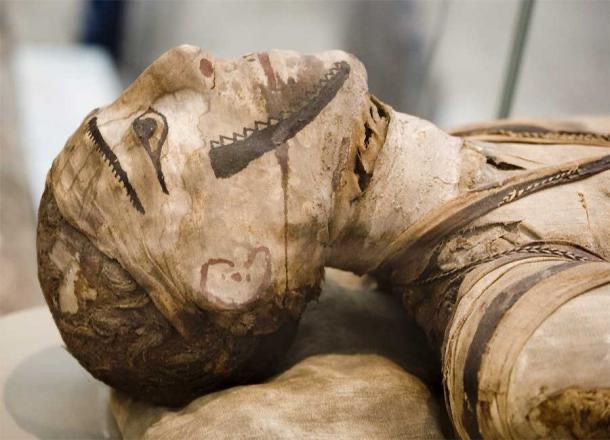Pyramids at Giza
- skloucherepierre
- Jan 13, 2021
- 3 min read

The Giza Pyramids, worked to persevere through an unending length of time, have done exactly that. The stupendous burial places are relics of Egypt's Old Kingdom time and were developed somewhere in the range of 4,500 years prior.
Egypt's pharaohs expected to become divine beings in life following death. To get ready for the following scene they raised sanctuaries to the divine beings and monstrous pyramid burial places for themselves—loaded up with all the things every ruler would require to manage and support himself in the following scene.
Pharaoh Khufu started the principal Giza pyramid project, around 2550 B.C. His Great Pyramid is the biggest in Giza and pinnacles approximately 481 feet (147 meters) over the level. Its assessed 2.3 million stone squares each gauge a normal of 2.5 to 15 tons.
Khufu's child, Pharaoh Khafre, assembled the second pyramid at Giza, around 2520 B.C. His necropolis likewise incorporated the Sphinx, a puzzling limestone landmark with the body of a lion and a pharaoh's head. The Sphinx may stand sentinel for the pharaoh's whole burial place complex.
The third of the Giza Pyramids is extensively more modest than the initial two. Worked by Pharaoh Menkaure around 2490 B.C., it highlighted a substantially more intricate funeral home sanctuary.
Each gigantic pyramid is nevertheless one piece of a bigger complex, including a royal residence, sanctuaries, sun based boat pits, and different highlights.
Building Boom
The antiquated designing accomplishments at Giza were noteworthy to such an extent that even today researchers can't be certain how the pyramids were constructed. However they have found out much about the individuals who fabricated them and the political force important to get it going.
The manufacturers were talented, very much took care of Egyptian laborers who lived in a close by impermanent city. Archeological burrows on the intriguing site have uncovered a profoundly coordinated local area, rich with assets, that probably been upheld by solid focal power.
Almost certainly, networks across Egypt contributed laborers, just as food and different fundamentals, for what became here and there a public undertaking to show the riches and control of the old pharaohs.
Such disclosures have driven Zahi Hawass, secretary general of Egypt's Supreme Council of Antiquities and a National Geographic pilgrim in-home, to take note of that in one sense it was the Pyramids that constructed Egypt—as opposed to the reverse way around.
Safeguarding the Past
In the event that the Pyramids assisted with building old Egypt, they additionally protected it. Giza permits us to investigate a since quite a while ago evaporated world.
"Numerous individuals consider the site simply a graveyard in the advanced sense, yet it's much more than that," says Museum of Fine Arts, Boston, and Tufts University Egyptologist Peter Der Manuelian. "In these enlivened burial chambers you have superb scenes of each part of life in antiquated Egypt—so it's about how Egyptians kicked the bucket as well as how they lived."
Burial place workmanship incorporates portrayals of old ranchers working their fields and tending domesticated animals, fishing and fowling, carpentry, outfits, strict customs, and internment rehearses.
Engravings and messages likewise permit investigation into Egyptian punctuation and language. "Practically any subject you need to learn about Pharaonic human advancement is accessible on the burial chamber dividers at Giza," Der Manuelian says.
To help make these valuable assets available to all, Der Manuelian heads the Giza Archives Project, a gigantic assortment of Giza photos, plans, drawings, compositions, object records, and endeavor journals that empowers virtual visits to the level.

More established records safeguard canvases or engravings that have since disappeared, catch relics that have been lost or devastated, and open burial chambers not available to general society.
Equipped with the yield of the longest-running unearthings ever at Giza, the Harvard-Museum of Fine Arts, Boston Expedition (1902-47), Der Manuelian desires to add global substance and develop the file into the world's focal online storehouse for Giza-related material.
In any case, he focuses on that nothing might imitate, or supplant, the experience of an individual visit to Giza.
The Future of the Pyramids
The travel industry to the structures has declined quickly since the coming of the Arab Spring in 2011, when Egypt encountered a political change that endured years. The nation has since experienced a few organization changes, and the precariousness implies the eventual fate of the travel industry to the Pyramids is dubious.
Article Source : https://www.nationalgeographic.com/history/archaeology/giza-pyramids/#close
.jpg)










The Documented Ancient Construction Method of The Great Pyramid Читайте больше на https://english.pravda.ru/science/142069-great_pyramid/